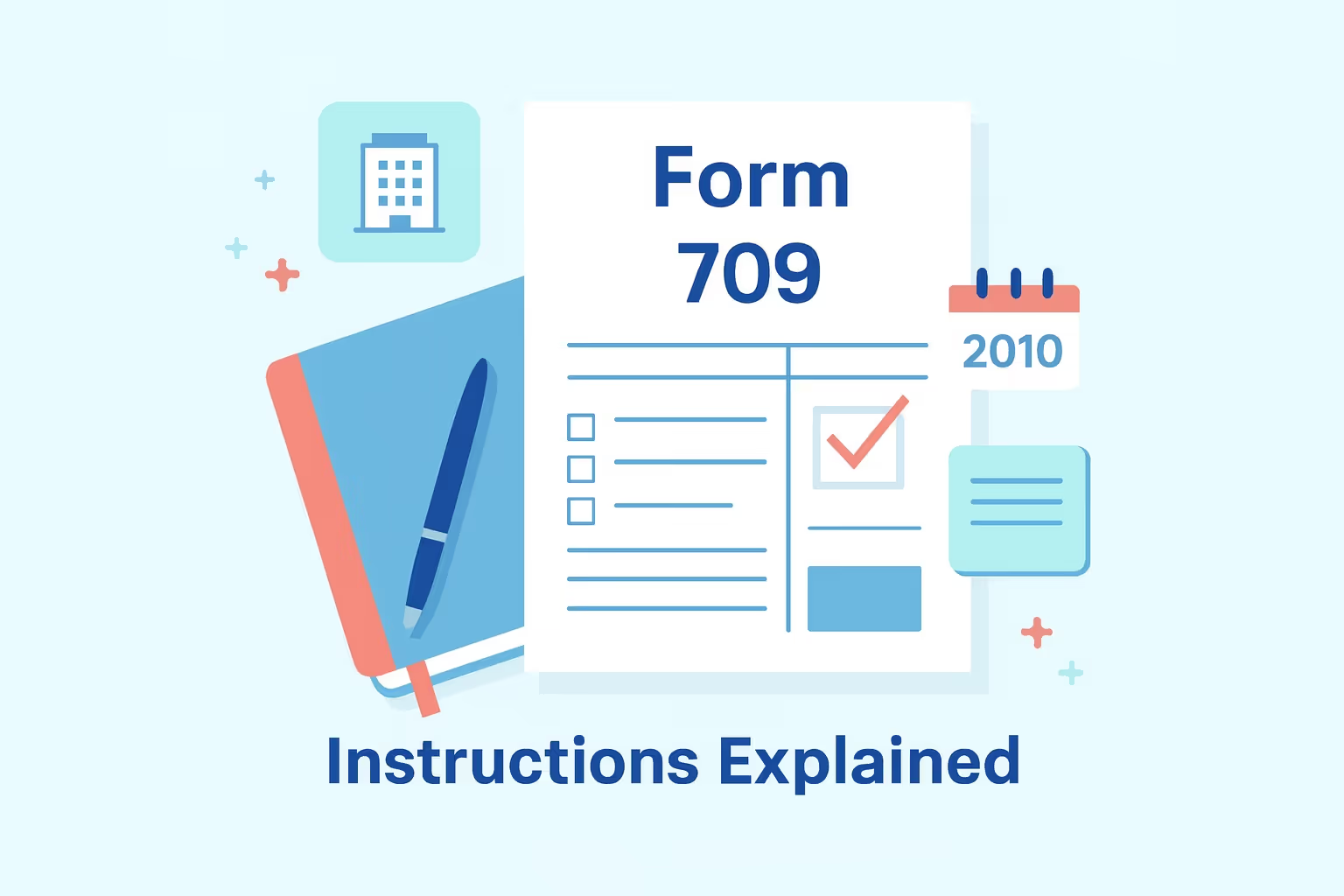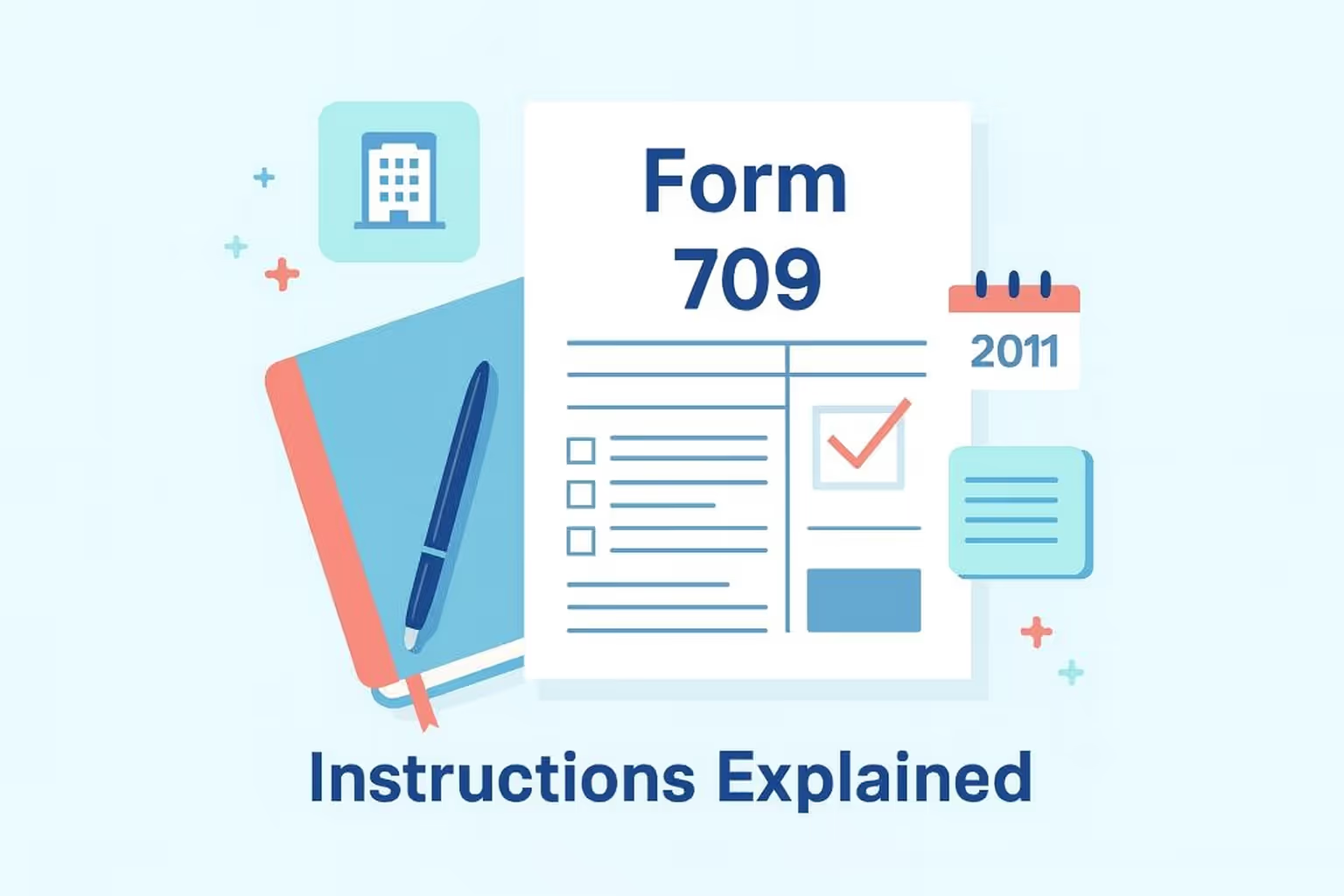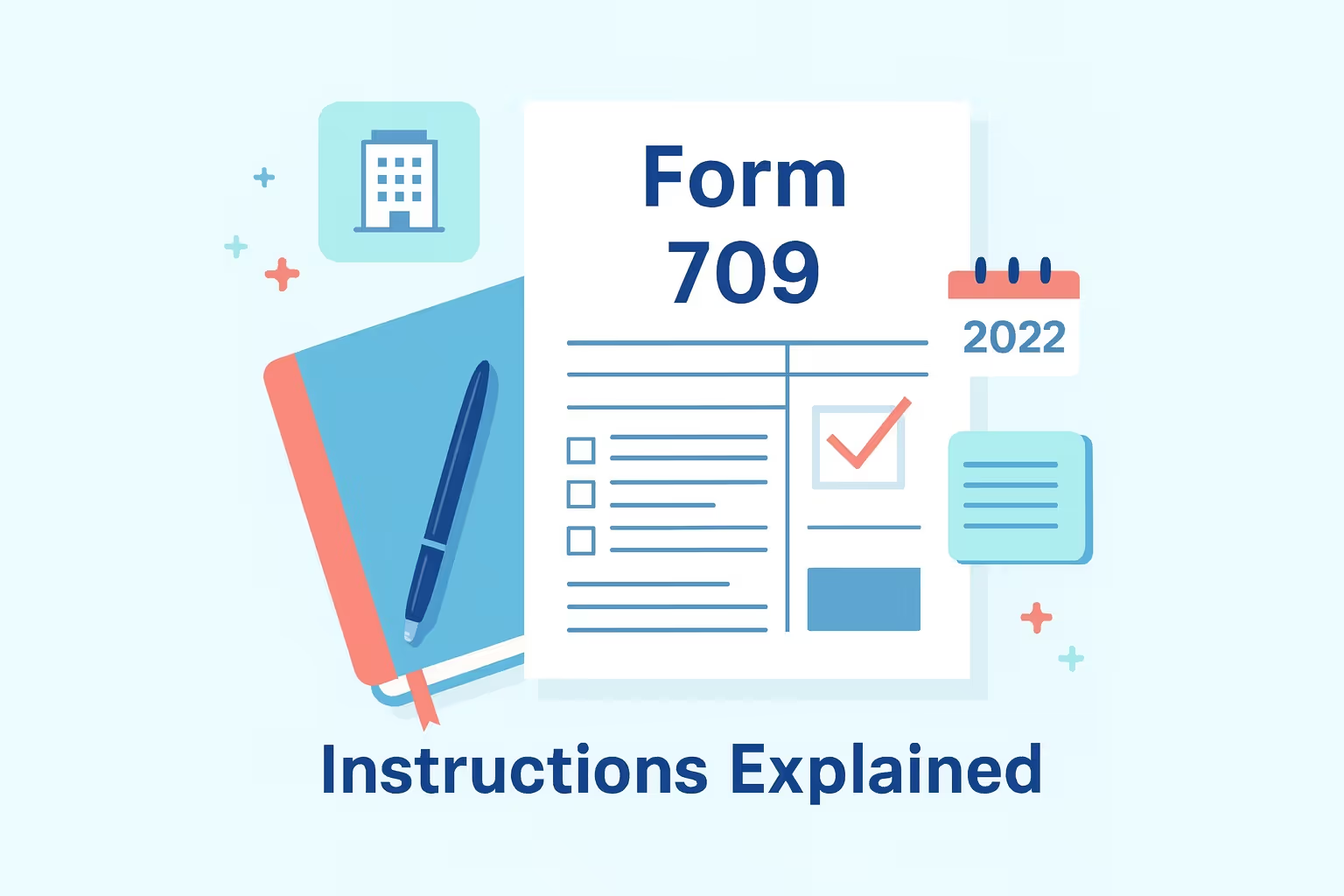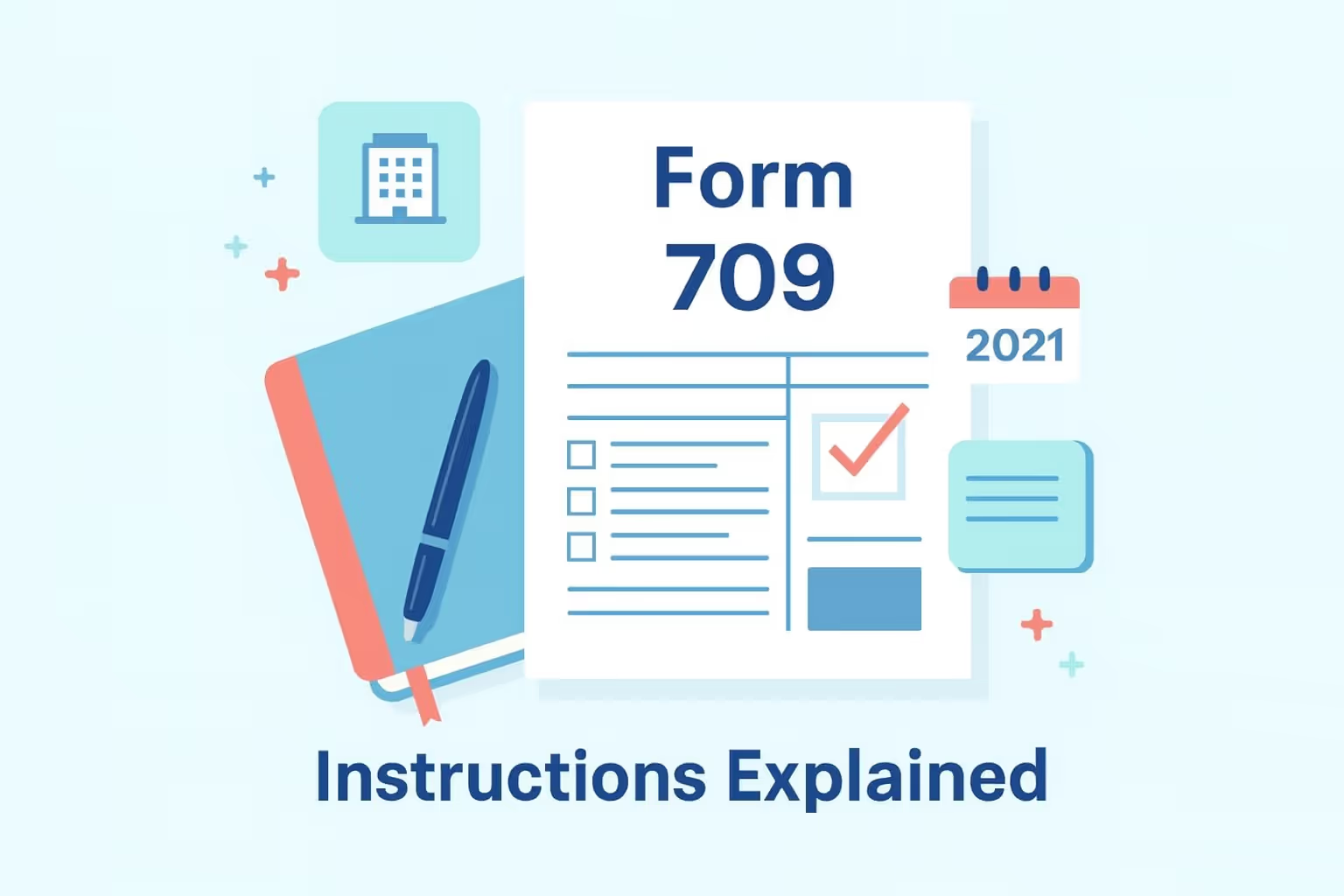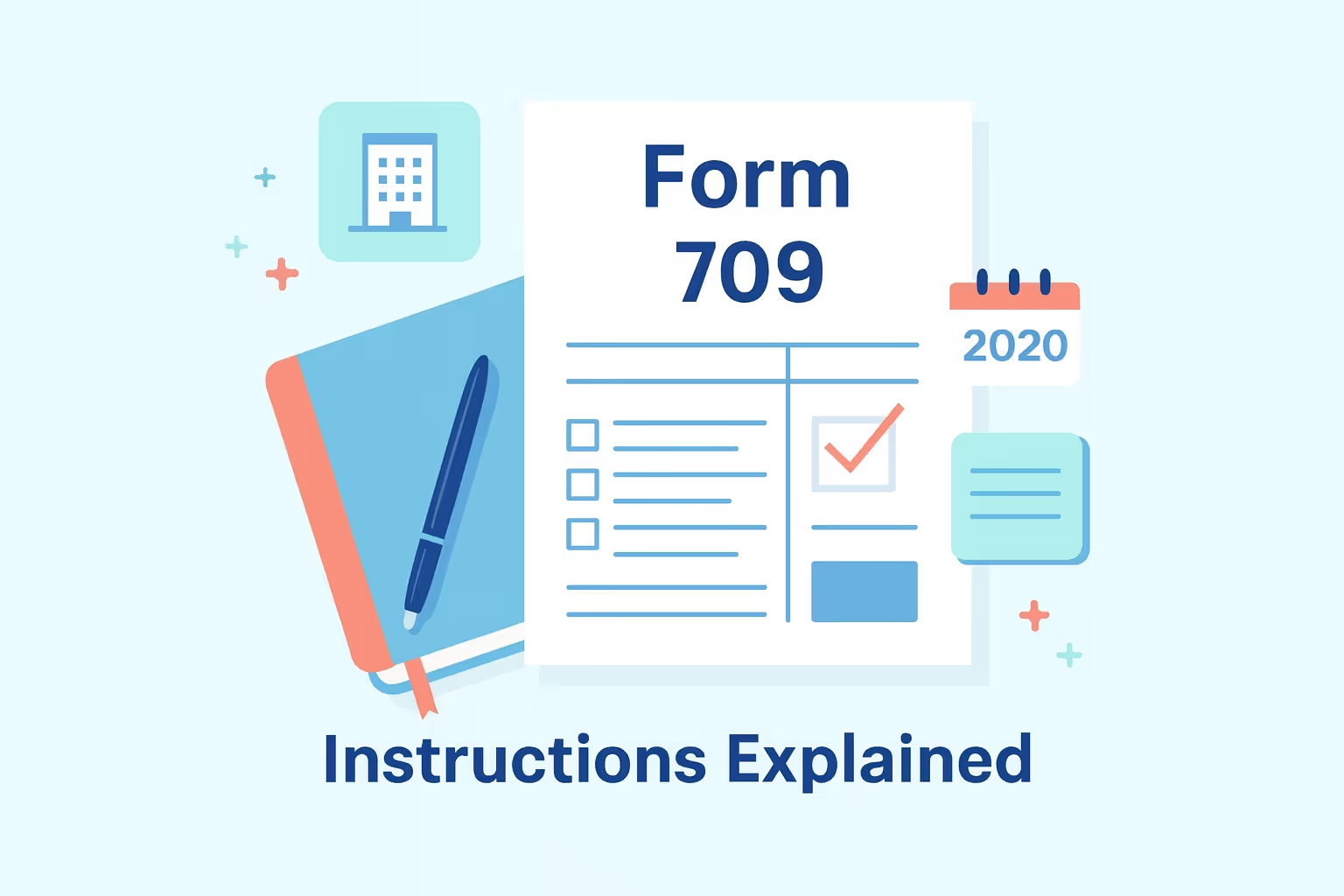Filing a federal estate tax return after a decedent’s death can be complex, especially for executors handling valuations, deductions, and deadlines for the first time. Form 706, known as the United States Estate (and Generation-Skipping Transfer) Tax Return, is used to calculate the taxable estate and report federal estate tax liability. Executors or administrators must file the form when a decedent’s estate exceeds the filing threshold or to elect portability for a surviving spouse. The Internal Revenue Service reviews this information to confirm the total value of the decedent’s estate, lifetime gifts, and deductions for estate tax purposes.
For decedents dying in 2011, the federal estate tax exemption increased to $5,000,000 under the Tax Relief, Unemployment Insurance Reauthorization, and Job Creation Act of 2010. This expanded exemption provided meaningful tax relief for many estates, including family businesses, married couples, and property acquired through inheritance. Executors must still document all assets, verify valuations, and consider related factors such as gift tax, generation-skipping transfer tax, and income tax implications.
According to the IRS Instructions for Form 706 (2011), estates that meet the filing requirement must submit a complete and accurate return within nine months of the decedent’s date of death. Proper preparation helps ensure compliance, supports beneficiaries, and preserves available tax relief under federal estate law.
Determining If You Need to File Form 706
Understanding whether you must file a federal estate tax return is the first essential step in estate administration. The Internal Revenue Service requires executors or administrators to evaluate the total value of the decedent’s estate, including all assets, lifetime gifts, and deductions.
This calculation determines if the estate exceeds the federal filing threshold and if a return must be submitted. Proper assessment helps ensure compliance, prevent filing delays, and preserve tax relief benefits available under the Internal Revenue Code.
Filing Requirement and Threshold
Executors must file Form 706 when the combined value of the gross estate, adjusted taxable gifts, and specific exemptions surpasses the 2011 filing threshold of $5,000,000. The gross estate includes the fair market value of all property owned at the decedent’s death, along with certain lifetime transfers.
Estates below the threshold may still need to file when electing portability of the deceased spousal unused exclusion, ensuring the surviving spouse can use any remaining exemption. This election can reduce the future estate tax for families managing substantial assets or complex estate plans.
Assets Included in the Taxable Estate
A thorough inventory ensures accurate reporting and compliance with federal estate tax requirements. Executors must include the following assets in the taxable estate:
- Real property acquired through ownership or inheritance includes residential homes, vacation properties, and undeveloped land.
- Personal property includes automobiles, collectibles, jewelry, and household furnishings.
- Business interests include ownership stakes in corporations, partnerships, or closely held companies.
- Lifetime gifts include transfers exceeding the annual gift tax exclusion made for gift tax purposes.
- Charitable giving and irrevocable trusts include the transfer of property or funds for charitable or estate tax purposes.
- Jointly held property includes assets shared with another person, including survivorship rights.
- Proceeds from life insurance include policies owned by the decedent or payable to the estate.
Each item should reflect the fair market value as of the decedent’s date of death to ensure accurate reporting. Professional appraisals strengthen documentation and support compliance during Internal Revenue Service review.
Importance of Accurate Evaluation
A precise determination of filing requirements provides a foundation for completing the federal estate tax return correctly. Miscalculations may result in compliance issues, missed elections, or delayed settlement of the estate. Executors managing estates near the filing threshold should obtain professional appraisals and thoroughly review all legal documents. Identifying the need to file early ensures timely submission, preserves tax relief opportunities, and supports the interests of all beneficiaries.
Calculating the Taxable Estate and Filing Threshold
Determining the taxable estate is a critical step in preparing an accurate federal estate tax return. Executors must calculate the total value of the decedent’s estate to determine whether the filing threshold applies. The taxable estate represents the amount subject to federal estate tax after all allowable deductions are applied. Understanding each component ensures compliance with Internal Revenue Service requirements and prevents errors that could affect the estate’s tax liability.
Core Calculation of the Taxable Estate
The process begins with identifying the gross estate, which includes the fair market value of all property owned by the decedent at the time of death. Executors must consist of real property, personal property, business interests, and certain lifetime gifts. The total value of the gross estate is then reduced by approved deductions such as funeral expenses, debts, administrative costs, and qualified charitable or marital transfers.
The remaining balance represents the taxable estate, which serves as the basis for calculating the federal estate tax owed. Accurate documentation ensures transparency and supports the estate’s position during Internal Revenue Service review.
Expanded Exemption and Filing Threshold
For decedents dying in 2011, the expanded exemption of $5 million applies under the Tax Relief, Unemployment Insurance Reauthorization, and Job Creation Act of 2010. This increased exemption and lower tax rates allowed most estates to transfer wealth without incurring estate tax liability.
Executors must verify the estate's total value, including lifetime gifts made for gift tax purposes, to determine whether the filing threshold is met. Estates slightly below the exemption amount should retain records demonstrating their total value does not exceed the limit, protecting against future disputes or inquiries.
Practical Preparation for Accurate Reporting
Comprehensive preparation ensures that all calculations accurately reflect the estate’s actual value. Executors should gather certified copies of the death certificate, professional appraisals, financial statements, and legal documents confirming ownership of each asset. Maintaining organized records simplifies the preparation process and ensures accurate reporting for federal estate tax purposes.
Collaboration with professionals, such as appraisers or tax advisors, assures that every asset, deduction, and credit is appropriately supported. A correct taxable estate calculation forms the foundation of a compliant federal estate tax return. Executing these steps with precision allows executors to meet filing requirements, safeguard tax relief opportunities, and ensure the estate’s smooth administration. Careful evaluation promotes accuracy, reduces errors, and strengthens confidence in every figure reported.
Estate Tax Exemption, Valuation, and Fair Market Value
Determining how much of an estate is subject to federal estate tax requires careful valuation and an accurate tax exemption application. Executors must review all assets, lifetime gifts, and deductions to identify the estate’s total value and confirm whether it exceeds the federal exemption. Each value entered on the federal estate tax return must align with fair market value standards established under the Internal Revenue Code.
- Identify the Gross Estate: Begin with a comprehensive inventory of all property included in the decedent’s estate. This includes real property, personal property, business interests, and other assets transferred during the decedent’s lifetime for gift tax purposes. The inventory should reflect ownership, appraised value, and supporting documentation that verifies the inclusion of each asset.
- Apply the Federal Estate Tax Exemption: For decedents dying in 2011, the expanded exemption of $5,000,000 established under the Tax Relief, Unemployment Insurance Reauthorization, and Job Creation Act determines whether tax applies. Executors must calculate the estate’s total value and subtract allowable deductions to determine the taxable portion. Any amount above the exemption becomes subject to federal estate tax liability, while estates below the threshold may still file for portability or administrative compliance.
- Establish Fair Market Value: Fair market value represents the price a willing buyer and seller would agree upon at the decedent’s date of death. Executors should obtain certified appraisals for real estate, family farms, closely held corporations, and other business interests. Assets without established markets, such as collectibles or charitable giving vehicles, may require independent valuation by qualified professionals.
- Maintain Documentation for Estate Tax Purposes: Supporting records must include appraisals, income statements, and legal documents verifying ownership and value. Consistent valuation practices ensure transparency, accuracy, and compliance during estate administration. Proper valuation also affects the step-up in basis for income tax purposes, ensuring that beneficiaries inherit assets at the correct value.
Accurate valuation confirms the estate’s eligibility for the federal exemption and ensures the estate tax return accurately reflects its financial position. Executors who apply fair market value correctly safeguard beneficiary interests and maintain compliance with federal estate tax requirements. Consistent documentation and professional review further strengthen the estate’s credibility and reduce the likelihood of disputes during IRS examination.
Portability Election and Surviving Spouse DSUE Rules
Executors handling a federal estate tax return for a married couple must consider whether to elect portability of the deceased spousal unused exclusion (DSUE). The DSUE transfers any remaining portion of the predeceased spouse’s federal estate tax exemption to the surviving spouse. This election can significantly reduce future estate tax liability and strengthen long-term estate planning. A complete and timely filed federal estate tax return is required to claim portability, even when the estate owes no tax.
Understanding the Deceased Spousal Unused Exclusion
The DSUE represents the unused portion of the federal estate tax exemption available at the predeceased spouse’s death. For decedents dying in 2011, the exemption totaled $5,000,000 under the Tax Relief, Unemployment Insurance Reauthorization, and Job Creation Act of 2010.
If a decedent’s taxable estate and lifetime gifts amount to less than the full exemption, the remaining balance may transfer to the surviving spouse. Portability ensures that married couples can fully use both exemptions to minimize overall estate tax liability. Executors must compute the DSUE accurately and record it on the federal estate tax return for the decedent’s estate.
Electing Portability for a Surviving Spouse
Electing portability requires filing Form 706 within nine months of the decedent’s date of death. Executors may request an automatic six-month extension using Form 4768 when additional time is necessary to gather valuations, verify deductions, or complete schedules.
The election applies only if the federal estate tax return is filed on time and in full compliance with all applicable laws and regulations. Once approved, the surviving spouse can use the DSUE toward future lifetime gifts or to reduce estate tax owed at their own death.
Executors can refer to the About Form 4768 page for details on extension requests and procedures required to preserve portability rights under federal law. Accurate documentation, including the death certificate, asset valuations, and calculation worksheets, supports a valid election and ensures smooth review during estate administration.
Managing Portability in Complex Estates
Complex estates involving multiple marriages, lifetime gifts, or blended families require careful planning. Only the last deceased spouse’s DSUE is available to the surviving spouse, which may affect future tax strategies. Executors must maintain records of all prior filings, exemptions used, and DSUE amounts carried forward. Coordination with tax professionals helps ensure accuracy and compliance across multiple estate and gift tax periods.
A properly executed portability election safeguards valuable tax relief and enhances the surviving spouse’s estate plan. Timely filing, comprehensive documentation, and accurate reporting enable families to preserve unused exemption amounts and maintain flexibility for future wealth transfers.
Generation-Skipping Transfer (GST) Tax and Exemptions
The generation-skipping transfer (GST) tax applies to certain wealth transfers made to individuals more than one generation below the decedent, such as grandchildren. Executors managing estates that include these transfers must determine whether the GST tax applies and ensure accurate federal estate tax return reporting. This tax functions with the federal estate tax to prevent avoidance through direct transfers to younger generations.
- The GST tax is a federal tax imposed on transfers that skip a generation, meaning property passes from a decedent to a grandchild or beneficiary at least 37½ years younger. It applies whether the transfer occurs outright or through a trust. The tax prevents transferred wealth from escaping taxation through multiple generational gifts. Executors must identify qualifying transfers and include them on the estate’s return.
- For decedents dying in 2011, the GST exemption equals the federal estate tax exemption of $5,000,000. This exemption allows estates to shield a portion of qualifying transfers from GST liability. Executors should allocate the exemption to trusts and beneficiaries to minimize the overall tax impact. Proper allocation records help preserve exemption benefits for future generations and demonstrate compliance with Internal Revenue Service regulations.
- Executors must report GST transactions using Schedules R and R-1 of Form 706. Schedule R calculates the GST tax for direct transfers, while Schedule R-1 covers transfers made through trusts. Supporting documentation, including trust agreements and beneficiary lists, is essential for accurate reporting. All valuations should reflect fair market value at the decedent’s date of death, consistent with federal estate tax standards.
- Effective GST planning protects family wealth and ensures consistent treatment across multiple generations. Executors managing estates with complex trust structures or blended families should consult tax professionals to allocate exemptions correctly and avoid errors that could result in unnecessary tax.
Applying GST exemptions accurately preserves wealth transfers, prevents double taxation, and aligns the estate with federal estate tax purposes. Detailed documentation, careful calculations, and timely filing ensure compliance and support smooth estate administration. Consistent GST reporting also reduces the risk of disputes during IRS examination. Thorough preparation strengthens the integrity of the estate and promotes confidence among beneficiaries.
Completing and Assembling the Federal Estate Tax Return
Preparing the federal estate tax return requires careful attention to each schedule, valuation, and deduction reported under the Internal Revenue Code. Executors must follow a structured process to ensure every figure is documented and supported. Completing Form 706 correctly helps determine the federal estate tax liability, validates elections such as portability or special-use valuation, and prevents delays during Internal Revenue Service review.
Step 1: Gather Essential Documents
Executors should begin by conducting a thorough review of the estate documents. Required materials include a certified death certificate, the decedent’s will, trust agreements, prior gift tax returns, and appraisals for all significant assets. Supporting documentation must verify ownership, value, and any related deductions. Organizing these records early ensures all schedules and attachments can be completed accurately and expediently.
Step 2: Complete the Identifying Information
The initial section of Form 706 requests identifying details about the decedent and executor. Executors must enter the decedent’s full legal name, Social Security number, domicile, and date of death. The executor’s information, including name, address, and taxpayer identification, must also be included. Accuracy in this section prevents processing errors and facilitates smooth correspondence with the Internal Revenue Service.
Step 3: Report the Gross Estate
Each asset must be reported at its fair market value on the decedent’s date of death. Executors should complete the applicable schedules:
- Schedule A – Real estate, including residential property and land
- Schedule B – Stocks, bonds, and other securities
- Schedule C – Mortgages, notes, and cash equivalents
- Schedule D – Life insurance proceeds payable to the estate
- Schedule E – Jointly owned property
- Schedule F – Miscellaneous personal property and business interests
Detailed descriptions, legal documents, and valuations must accompany each item listed. Consistency across schedules supports transparency and strengthens compliance with estate tax purposes.
Step 4: Apply Deductions and Credits
Executors must record allowable deductions for funeral expenses, debts, administrative costs, and qualified transfers on applicable schedules. Marital and charitable deductions reduce taxable estate value when properly substantiated. Credits may include prior payments or foreign death tax offsets. Calculating these deductions carefully ensures an accurate determination of estate tax owed.
Step 5: Calculate Federal Estate Tax Liability
The final computation involves combining the taxable estate with adjusted taxable gifts. Executors must apply the unified credit and relevant tax rates established under the 2010 Tax Relief. The resulting figure reflects the federal estate tax liability, which must be supported by documentation across all schedules.
Step 6: Assemble and File the Return
Once complete, executors must arrange the return in proper order: main form, schedules, attachments, and certifications. Every page should include the decedent’s name and Social Security Number. The executor must sign and date the declaration to affirm the return’s accuracy. Retaining copies for estate records protects against future disputes and supports the final settlement process.
Completing Form 706 thoroughly and accurately provides a foundation for compliant estate administration. Organized documentation, consistent valuations, and timely filing confirm adherence to federal estate tax requirements and preserve benefits for all beneficiaries. Careful attention to every detail reduces the likelihood of IRS inquiries and promotes confidence in the estate’s final reporting. Executors who maintain transparency and precision effectively uphold their fiduciary responsibilities.
Filing Deadlines, Tax Relief Options, and Tax Cuts Impacts
Executors preparing a federal estate tax return must carefully manage filing deadlines and understand the relief provisions available under the Internal Revenue Code. Timely filing ensures eligibility for deductions, elections, and credits that may reduce overall estate tax liability. Missing critical deadlines can result in additional administrative burdens or lost opportunities for valuable estate tax relief.
Key Filing Deadlines and Extensions
Form 706 must be filed within nine months of the decedent’s date of death. Executors unable to meet this requirement may request an automatic six-month extension using Form 4768. This extension applies only to filing, not payment, so any federal estate tax owed must still be paid within the original nine-month period. Interest accrues on the unpaid estate tax, which increases the estate’s financial responsibility. Executors should document all filing dates and retain proof of timely submission for estate administration records.
Tax Relief Options for Eligible Estates
Several provisions under the Internal Revenue Code allow estates to defer or extend payment obligations when liquidity is limited. Section 6166 enables installment payments for closely held business interests if they represent at least 35% of the adjusted gross estate. Section 6163 allows tax deferral related to reversionary or remainder interests until the property becomes possessory. Estates may also qualify for extensions under reasonable cause provisions when specific conditions prevent timely payment. Detailed documentation supports approval for all relief elections and helps maintain compliance.
Impacts of 2011 Tax Cuts on Federal Estate Tax
The 2010 Tax Relief, Unemployment Insurance Reauthorization, and Job Creation Act significantly altered federal estate tax rules for decedents who died in 2011. It established a $5,000,000 exemption and reduced the maximum tax rate to 35%, expanding opportunities for tax relief and wealth transfer planning. These provisions allowed many estates to preserve more assets for beneficiaries while maintaining federal oversight of taxable transfers. Executors must apply the appropriate exemption and rate schedules when computing estate tax owed under the 2011 regulations.
Executors can review the IRS Estate Tax FAQs for guidance on due dates, payment methods, and relief elections available for qualifying estates. Reviewing official resources ensures that each step aligns with current requirements and supports accurate reporting.
Meeting all deadlines, selecting suitable tax relief elections, and applying correct exemption amounts reinforce compliance and financial stewardship. Proactive planning, consistent documentation, and awareness of legislative changes enable executors to manage complex obligations with precision and efficiency. Careful attention to these requirements protects estate assets, preserves available exemptions, and supports an efficient settlement process.
Frequently Asked Questions
What are the filing requirements to file an estate tax return?
You must file an estate tax return when the total value of the decedent’s estate exceeds the federal exemption for the year of death. For decedents who died in 2011, estates valued at more than $5,000,000 must file an estate tax return under the Jobs Act. Filing may also be required to preserve portability for a surviving spouse. Executors should include all assets, lifetime gifts, and allowable deductions when calculating the total value of the estate.
How does the gift tax exemption affect the federal estate tax return?
The gift tax exemption allows individuals to transfer assets during their lifetime without immediate federal estate tax consequences. Gifts exceeding the annual exclusion amount reduce the available exemption at the time of death. Executors must include prior taxable gifts when they file an estate tax return, as these transfers increase the total taxable estate. Accurate reporting of lifetime gifts ensures proper calculation of estate tax owed and supports compliance with federal tax regulations.
What happens when the surviving spouse dies after receiving the DSUE amount?
When a surviving spouse dies after inheriting the deceased spousal unused exclusion (DSUE), the transferred exemption becomes part of the surviving spouse’s available federal estate tax exemption. The estate may combine both exemptions to reduce overall liability. Executors must provide documentation of the prior election and include it with the return when filing an estate tax return. Proper recordkeeping ensures the DSUE is applied accurately and thoroughly.
How does the Jobs Act impact estate tax planning for 2011?
The Jobs Act, formally known as the Tax Relief, Unemployment Insurance Reauthorization, and Job Creation Act, expanded the federal estate tax exemption to $5 million and lowered the top tax rate to 35%. These provisions allowed more estates to transfer wealth without incurring tax. Executors filing for decedents who died in 2011 should apply these thresholds when determining estate tax liability and evaluating whether special deductions or elections apply.
Can an estate claim special deductions to reduce taxable value?
Yes, estates may claim special deductions to reduce the taxable value of the estate. These include administrative expenses, funeral costs, debts, charitable transfers, and qualified marital deductions. Executors must substantiate each deduction with documentation and ensure that expenses claimed are reasonable and necessary. Including all eligible deductions when filing an estate tax return provides an accurate computation of net worth and reduces overall tax liability.
How should executors handle estates when the decedent was not a citizen?
Executors handling an estate for a decedent who was not a U.S. citizen must apply different filing thresholds and inclusion rules. U.S.-situated assets, including real property and securities, may be subject to federal estate tax. Non-citizen estates typically do not qualify for the full exemptions available to U.S. citizens. Executors should seek legal guidance to ensure proper application of deductions, credits, and treaties when filing an estate tax return.
How does net worth influence the decision to file an estate tax return?
An estate’s net worth determines whether filing is required under federal law. Executors must total all assets, including real property, business interests, and lifetime gifts, then subtract allowable deductions. If the remaining value exceeds the applicable exemption, they must file an estate tax return. Careful calculation of net worth ensures compliance with federal filing requirements and preserves the estate’s eligibility for exemptions and special deductions.




























